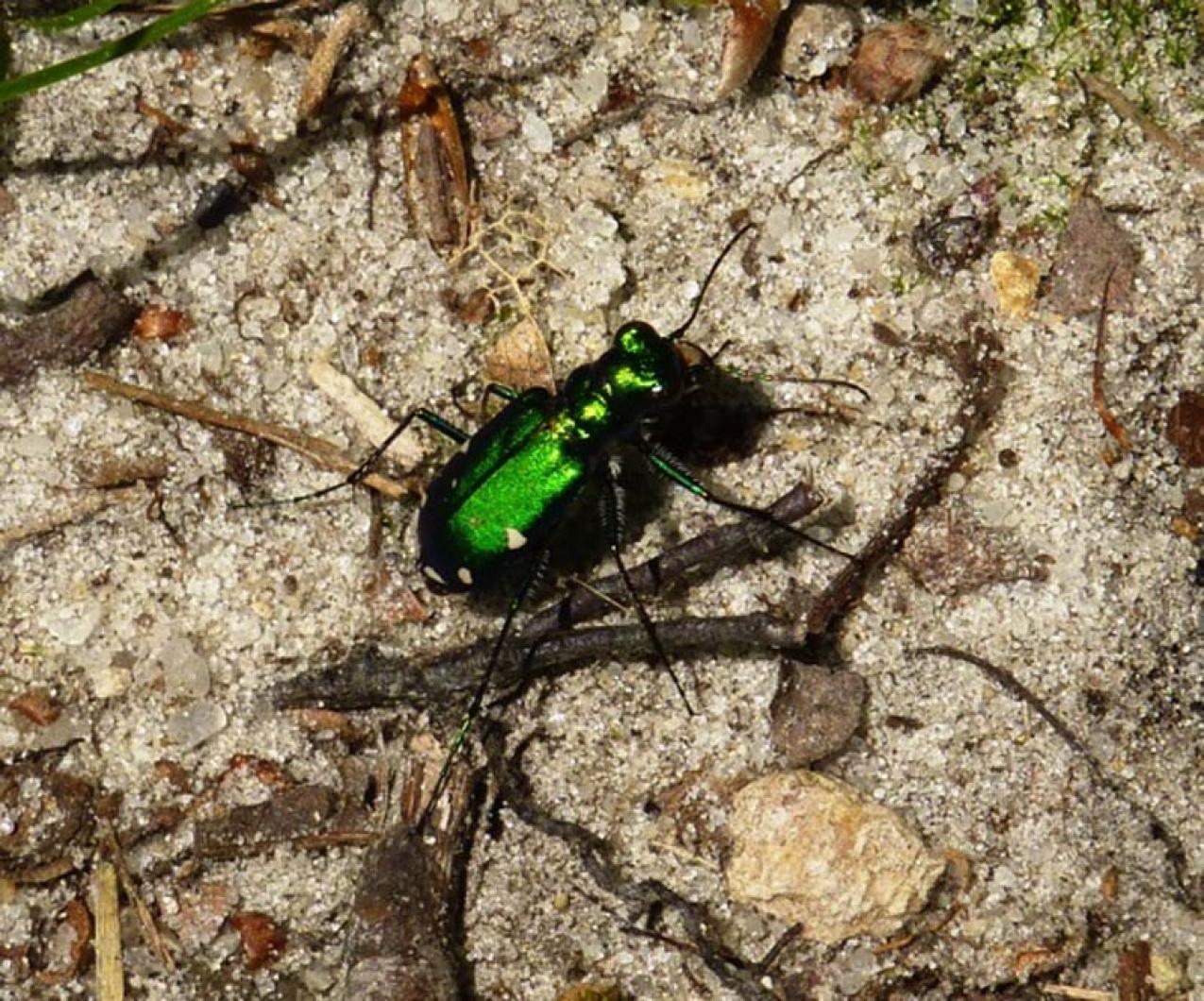These brilliant beetles are easy to spot and hard to forget.
Spots are the way to identify the six-spotted green tiger beetle, but don’t take the name too literally. The beautiful beetles defy the confines of their given name.
For instance, don’t waste time counting spots for an identity confirmation. The six-spotted green tiger beetle can have as few as zero or as many as 10 white spots on their hard, outer wings.
The beetle’s color doesn’t always match its name, either. Kermit always told us that it isn’t easy being green, but the six-spotted tiger beetle might beg to differ. It is as green as it gets, with a shiny metallic emerald shell that any racecar driver would be jealous of. Except, of course, when it is blue, another hue this insect can take on. Its legs and antennae are also green (or blue) to keep with its color scheme.
You may have been seeing them singly on wooded trails in June and July, but starting this month, you will see them no more. In the previous months, the adults were moving around and mating. Known to live alone, they seek company only for mating.
The female has a hard time getting rid of the male after their get-together. He has been known to ride on her back to prevent other males from getting to his mate. After they have coupled, the female (with or without her hanger-on) will dig a hole in the soil and lay a single egg. The egg will stay in the ground and hatch into a larva, or grub, before it pupates into an adult.
The larval stage is as ferocious as the large-mandibled adult. Like a jack-in-the-box, it will jump out and snatch unsuspecting prey that crosses its path. Ants, spiders, springtails, grasshoppers, caterpillars and other beetles are easy prey for this crouching tiger.
The adult will overwinter in its burrow for almost an entire year before emerging in the late spring. So don’t plan on an encounter with this metallic monster until next year.
If you do come face to face with this creature, no matter how frightening it is, don’t try to run away. Your size outweighs their speed. However, their pace is impressive.
Tiger beetles are one of the fastest runners in the insect world and would put to shame even the speediest human sprinter. Tiger beetles have been clocked in at a top speed 1.2 miles per hour, but don’t let that number fool you. The size of the insect makes this an interesting and amazing feat. That speed would allow the insect to cover 53 of its body lengths per second.
To compare, look to the fastest man in the world, Usain Bolt. Bolt has run an impressive 27.3 miles per hour at his fastest. With his height of over six feet, he traverses six times his body length in the same second. This pace is nine times slower than the lowly tiger beetle when comparing body size and scale.
So those who say “you can run, but you can’t hide” are wrong in this case; this tiger beetle does both admirably well to survive. And it also shows its true colors, and even changes its spots. About the only thing it doesn’t do is endear people to it with its looks — it is anything but cute. But of course, it is not out to charm anyone, it is out to survive. Being the quickest and toughest beetle in the woods — even if only for a few months out of the year — is a winning strategy for that goal.
Suzan Bellincampi is director of the Felix Neck Wildlife Sanctuary in Edgartown.







Comments
Comment policy »